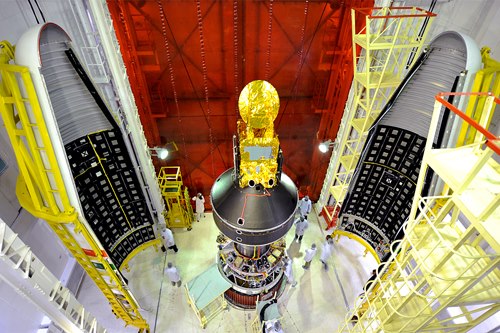
CNUSail-1 Credit KARI-Blog
CubeSats carrying amateur radio payloads were among the 31 satellites successfully launched on January 12 at 0359 UT on the ISRO PSLV-C40 mission from Satish Dhawan Space Centre in Sriharikota, India.
Two of the CubeSats, Fox-1D and PicSat, carry amateur radio FM transponders, but neither is yet available for general amateur use. The PicSat FM transponder is unusual in that instead of a CTCSS tone it requires a 1750 Hz tone burst to activate. The 1750 Hz tone burst used to be popular on IARU Region 1 FM repeaters in the 1980s and 90s before the widespread use of CTCSS.
CNUSail-1, built by students at the Chungnam National University in Korea, carries a deployable sail. The students have requested the help of radio amateurs in receiving the 437.100 MHz 9600 bps BPSK beacon, further information is available at https://sites.google.com/view/cnuusg
JE9PEL lists these frequencies for the satellites carrying amateur radio payloads:
Fox-1D (AO-92) 145.880 down 435.350/1267.350 up FM CTCSS 67.0Hz/200bps DUV
PicSat 435.525 1200bps BPSK
CNUSail-1 437.100 9600bps BPSK
SIGMA 435.780 MHz BPSK 9600 bps
Canyval-X 1/2 437.200 9600bps MSK
KAUSAT-5 437.465/2413.000 9600bps FSK,115k2 MSK
STEP-1 437.485 9600bps FSK CW
Shankar A65CR/VU2SWG reported coping the Fox-1D satellite voice beacon on the morning pass at 30 deg elevation in Dubai using a TH-F7 with standard rubber duck. YL voice with satellite identifier. Very short burst with fluctuating carrier.
Madhu A65DE also copied Fox-1D from Fujairah, North of Dubai.

Picture taken by Fox-1D AO-92 on January 13, 2018
AMSAT North America has issued a statement formally designating Fox-1D as AO-92:
Fox-1D, a 1U CubeSat, is the third of AMSAT’s five Fox-1 CubeSats to reach orbit, being preceded by AO-85 (Fox-1A) and AO-91 (RadFxSat / Fox-1B). Fox-1D carries the Fox-1 U/v FM transponder, with an uplink of 435.350 MHz (67.0 Hz CTCSS) and a downlink of 145.880 MHz. In addition, Fox-1D carries several university experiments, including a MEMS gyro from Pennsylvania State University – Erie, a camera from Virginia Tech, and the University of Iowa’s HERCI (High Energy Radiation CubeSat Instrument) radiation mapping experiment. Fox-1D also carries the AMSAT L-Band Downshifter experiment which enables the FM transponder to be switched to utilize an uplink of 1267.350 MHz (67.0 Hz CTCSS).
Fox-1D was sent aloft as a secondary payload on the Indian Space Research Organisation (ISRO)’s PSLV-XL rocket as part of the PSLV-C40 mission. Fox-1D was one of thirty-one satellites successfully deployed on this launch.
Since Fox-1D has met all of the qualifications necessary to receive an OSCAR number, I, by the authority vested in me by the AMSAT President, do hereby confer on this satellite the designation AMSAT-OSCAR 92 or AO-92. I join amateur radio operators in the U.S. and around the world in wishing AO-92 a long and successful life in both its amateur and scientific missions.
I, along with the rest of the amateur community, congratulate all of the volunteers who worked so diligently to construct, test and prepare for launch the newest amateur radio satellite.
William A. (Bill) Tynan, W3XO
AMSAT-NA OSCAR Number Administrator
Further information on the Fox-1D launch, deployment and designation at
https://www.amsat.org/fox-1d-launched-designated-amsat-oscar-92/
Pictures taken by Fox-1D (AO-92) http://www.amsat.org/tlm/fox1d/images/
Information on PicSat is available via
https://amsat-uk.org/2018/01/10/picsat/
Report on the five Korean satellites that were launched
http://koreabizwire.com/cube-satellites-built-by-university-students-launched-into-outer-space/107445
N2YO online real-time satellite tracking http://www.n2yo.com/
AMSAT-NA online orbital predictions http://www.amsat.org/track/
Keplerian Two Line Elements (TLEs) ‘Keps’ for new satellites launched in past 30 days
http://celestrak.com/NORAD/elements/tle-new.txt









You must be logged in to post a comment.